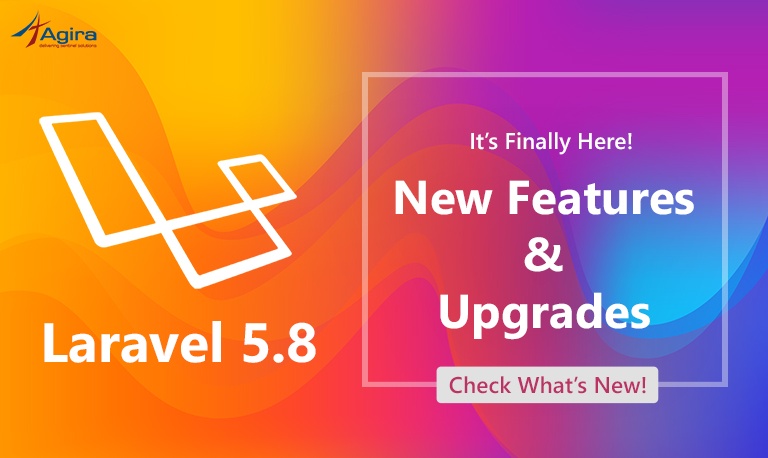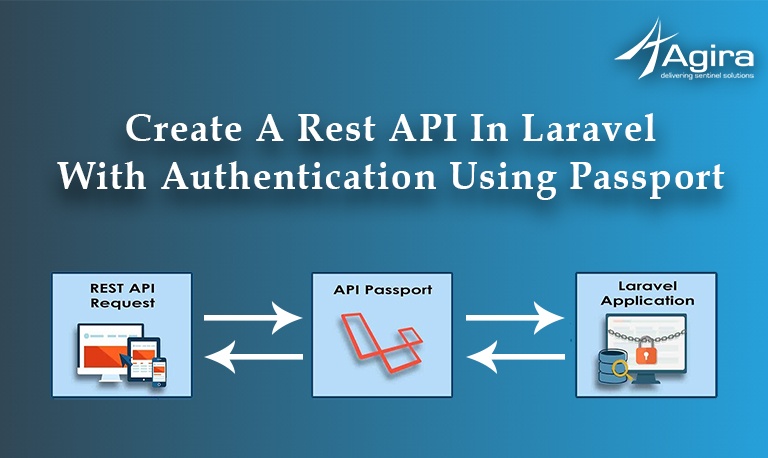Table of Contents
Using charts and graphs to represent the data is the best effective solution for any website especially when the site has large data. The idea behind this blog is to help you guys to generate charts and graphs using Laravel.
Let’s get started!
Install composer
First, we need to install composer, Composer is a package management tool for PHP. Laravel requires a composer for installation.
You can download the composer by using this link. After the installation, you can use “composer” command to check whether the composer got installed or not.
Install Laravel
In this blog, we will be using Laravel 5.6. Alongside, we can also install the Laravel package in three different ways. From command prompt or using terminal or using GitHub
Execute this command to install Laravel, composer global require “laravel/installer” and then create a project like below.
Laravel new <project_name>
or
we can also create a project using via composer,
composer create-project --prefer-dist laravel/laravel <project_name>
Directly clone from GitHub
From this link, you can get the Laravel application and after that, we need to install the composer by using the command composer install.
How to Set Up Laravel On Local Server
Run the below command in command prompt or terminal.
PHP artisan serve
After executing this command Laravel will start working on a local server.
On localhost port, if you want to change the default port number instead of 8000 and you can use the below command to do it. http://localhost:8000
php artisan serve --port <port_number>
Generating Charts And Graphs
Here we are using consoletvs package for generating charts. So for installation, first, we should change the path for our project using command prompt or terminal. Follow the below steps to install
Step 1
First, we need to install ConsoleTVs/Charts composer package inside our Laravel project. composer require consoletvs/charts.
Step 2
After installing successfully, open app/config.php and add service provider.
In config/app.php 'providers' => [ .... ConsoleTVs\Charts\ChartsServiceProvider::class, ], After the service provider we need to add alias 'aliases' => [ .... 'Charts' => ConsoleTVs\Charts\Facades\Charts::class, ]
Step 3
We need to configure the database for an application. We can configure it in either .env file or config/database.php file.
Step 4
Now we should migrate the default table named “user”. We can find the table in database/migration folder.
Step 5
In order to generate charts first, we must generate dummy records for the demo in the user’s table. For creating dummy records, we need to run the below command in command prompt or terminal.
php artisan tinker>>> factory(App\User::class, 20)->create();
The above command will create a set of 20 records. If we need to add more records, we can increase the count as much as we want. For example,
php artisan tinker>>> factory(App\User::class, 2000)->create();
Step 6
Creating Controller – You need to run the below common in the terminal or Command prompt.
Php artisan make controller:<controller_name>
Step 7
Adding the routes
We can also add the routes for navigating our application. You can find routes file inside the routes folder. Before 5.4 we can directly find the routes.php file itself, now its web.php. If you are using Laravel 5.2 then you could find the routes.php file inside the app/HTTP folder.
So inside web.php, we can give the path,
Route::get('create-chart/{type}','ChartController@makeChart');
Here type will be the parameter we are passing it which will focus on makeChart() function inside chartcontroller.
Related: How To Build REST API with Laravel 5.6
Step 8
Import charts to the controller, On the namespace section add the below line,
Use charts;
Step 9
To create the charts add the below code into chartController, here I have created bar chart, pie, donut, line, area, geo and if you want it more then similarly you can add as much as you want.
public function makeChart($type)
{
switch ($type) {
case 'bar':
$users = User::where(DB::raw("(DATE_FORMAT(created_at,'%Y'))"),date('Y'))
->get();
$chart = Charts::database($users, 'bar', 'highcharts')
->title("Monthly new Register Users")
->elementLabel("Total Users")
->dimensions(1000, 500)
->responsive(true)
->groupByMonth(date('Y'), true);
break;
case 'pie':
$chart = Charts::create('pie', 'highcharts')
->title('HDTuto.com Laravel Pie Chart')
->labels(['Codeigniter', 'Laravel', 'PHP'])
->values([5,10,20])
->dimensions(1000,500)
->responsive(true);
break;
case 'donut':
$chart = Charts::create('donut', 'highcharts')
->title('HDTuto.com Laravel Donut Chart')
->labels(['First', 'Second', 'Third'])
->values([5,10,20])
->dimensions(1000,500)
->responsive(true);
break;
case 'line':
$chart = Charts::create('line', 'highcharts')
->title('HDTuto.com Laravel Line Chart')
->elementLabel('HDTuto.com Laravel Line Chart Lable')
->labels(['First', 'Second', 'Third'])
->values([5,10,20])
->dimensions(1000,500)
->responsive(true);
break;
case 'area':
$chart = Charts::create('area', 'highcharts')
->title('HDTuto.com Laravel Area Chart')
->elementLabel('HDTuto.com Laravel Line Chart label')
->labels(['First', 'Second', 'Third'])
->values([5,10,20])
->dimensions(1000,500)
->responsive(true);
break;
case 'geo':
$chart = Charts::create('geo', 'highcharts')
->title('HDTuto.com Laravel GEO Chart')
->elementLabel('HDTuto.com Laravel GEO Chart label')
->labels(['ES', 'FR', 'RU'])
->colors(['#3D3D3D', '#985689'])
->values([5,10,20])
->dimensions(1000,500)
->responsive(true);
break;
default:
# code...
break;
}
return view('chart', compact('chart'));
}
Also Read: Tips To Improve The Performance Of A Laravel Application
Step 10
Create a blade file. The blade is the view file used inside the Laravel. You can add a new blade file with any name with an extension of .blade.php. Now, create a blade file and upload this code.
Creating chart.blade.php
<!DOCTYPE html>
<html lang="en">
<head>
<meta charset="utf-8">
<meta http-equiv="X-UA-Compatible" content="IE=edge">
<meta name="viewport" content="width=device-width, initial-scale=1">
<title>My Charts</title>
{!! Charts::styles() !!}
</head>
<body>
<!-- Main Application (Can be VueJS or other JS framework) -->
<div class="app">
<center>
{!! $chart->html() !!}
</center>
</div>
<!-- End Of Main Application -->
{!! Charts::scripts() !!}
{!! $chart->script() !!}
</body>
</html>
Step 11
Use the PHPartisan serve command to run the Laravel application in the local server.
http://localhost:8000/create-chart/bar http://localhost:8000/create-chart/pie http://localhost:8000/create-chart/donut http://localhost:8000/create-chart/line http://localhost:8000/create-chart/area http://localhost:8000/create-chart/geo
In the above example, we were creating a line chart, geo chart, bar chart, pie chart, donut chart, line chart, and area chart. We can also create a gauge chart, progress bar chart, areaspline chart, scatter chart, percentage chart with help of consoletvs charts composer package.
Also, there are a lot of jquery libraries also available which can help us to create other charts like amcharts, charts, highchairs, google, material, chartist, fusion charts, Morris, etc. Using this plugin, we can easily create all these charts and hopefully, we don’t need any jquery to run this plugin which could be an added advantage of this plugin.
Find this tutorial useful? Share it with your folks who deserve this piece of information. Don’t forget to subscribe to the weekly newsletter for regular updates and tutorials on Laravel development.
Searching for the right technology to start your project? Hire Laravel Developers from Agira Technologies and get started with the project on guaranteed success. Consult our technology experts today!










